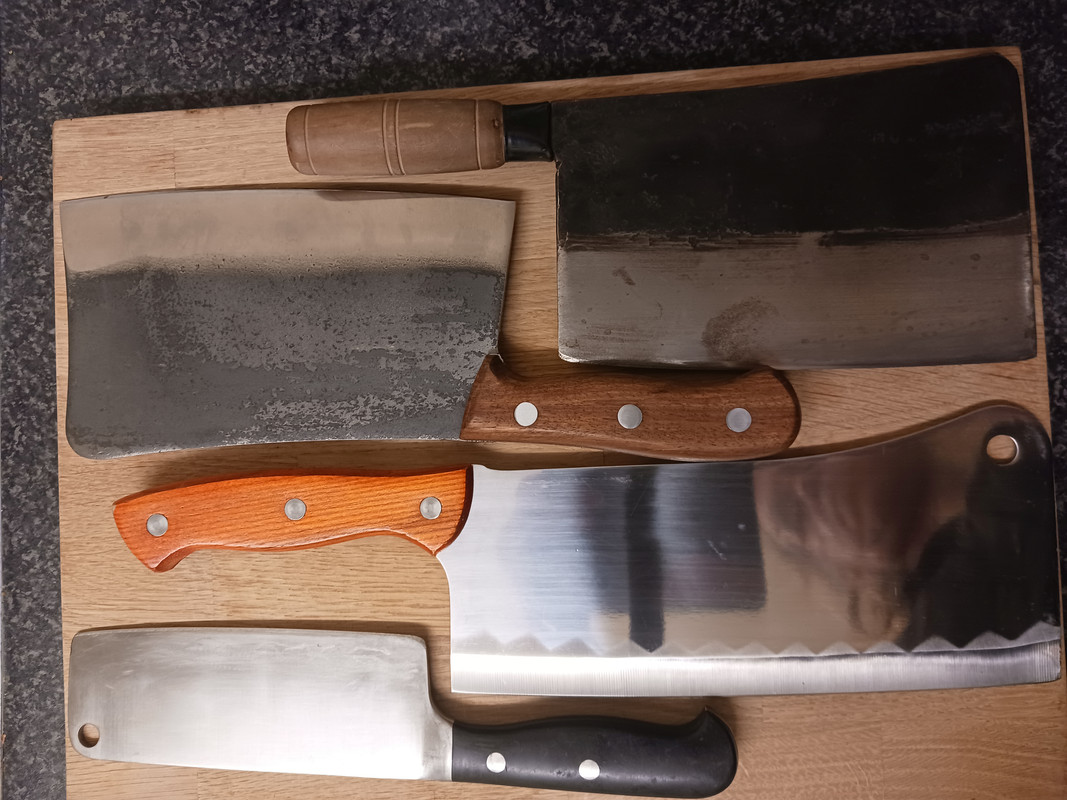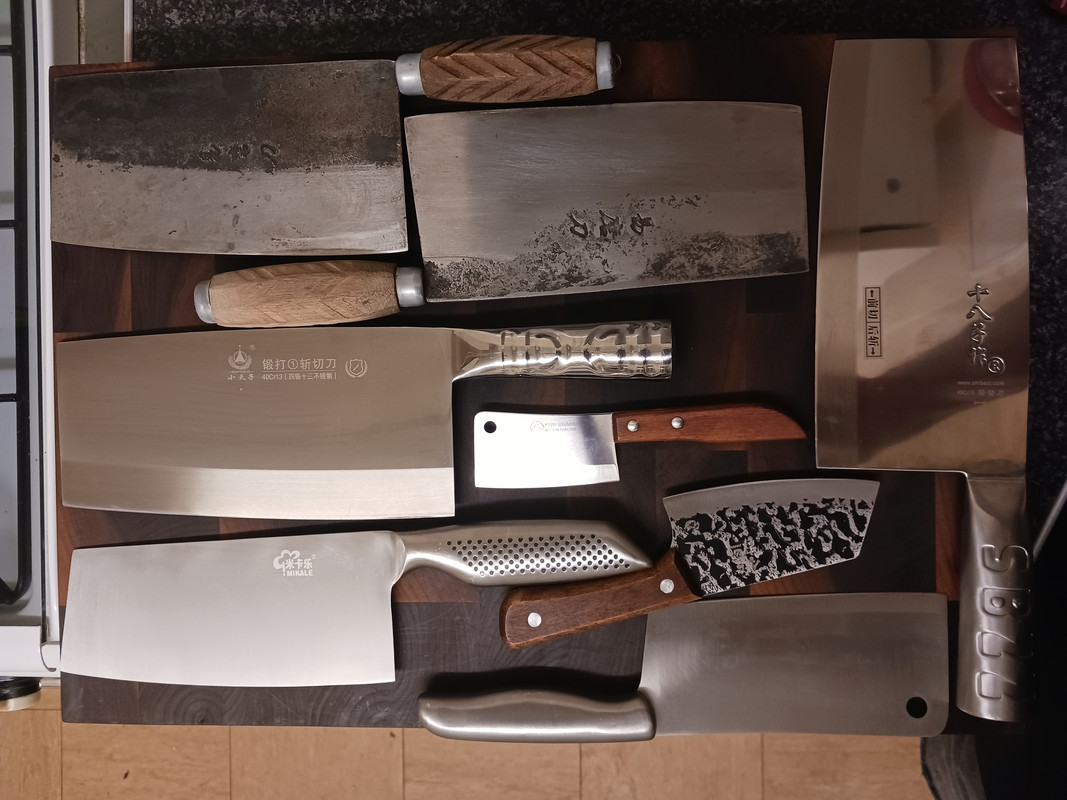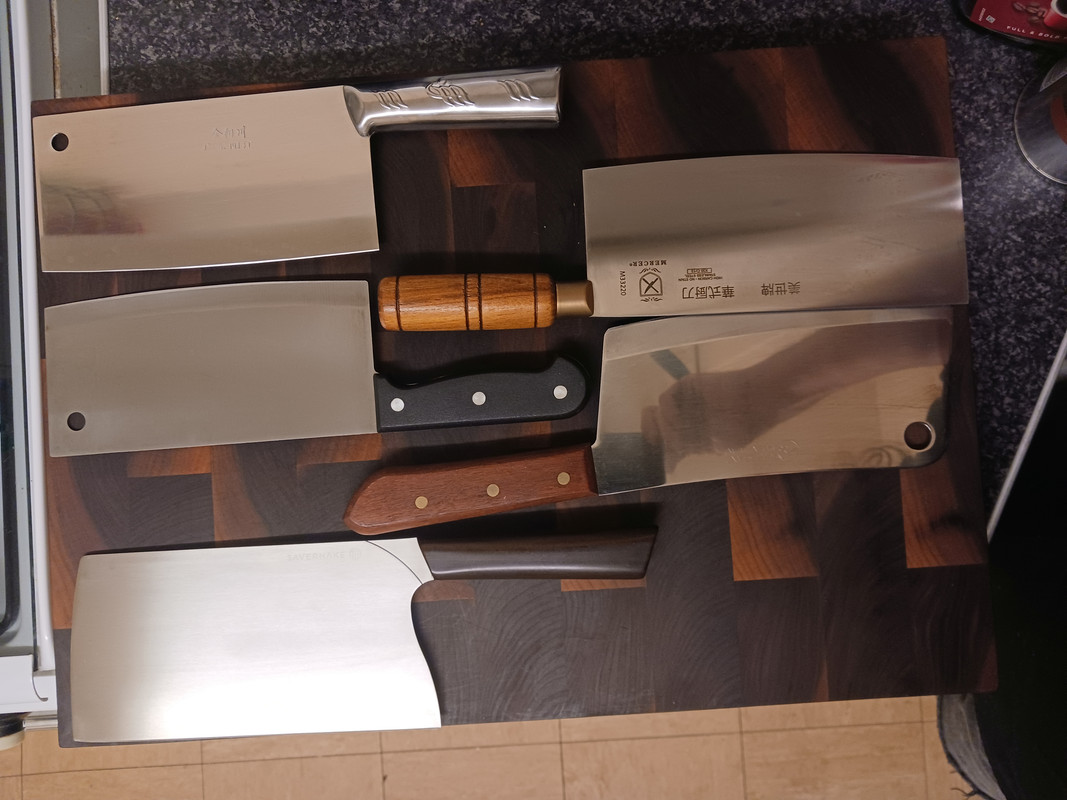-
The BladeForums.com 2024 Traditional Knife is available! Price is $250 ea (shipped within CONUS).
Order here: https://www.bladeforums.com/help/2024-traditional/
You are using an out of date browser. It may not display this or other websites correctly.
You should upgrade or use an alternative browser.
You should upgrade or use an alternative browser.
My favourite choppers
- Thread starter roaduck
- Start date
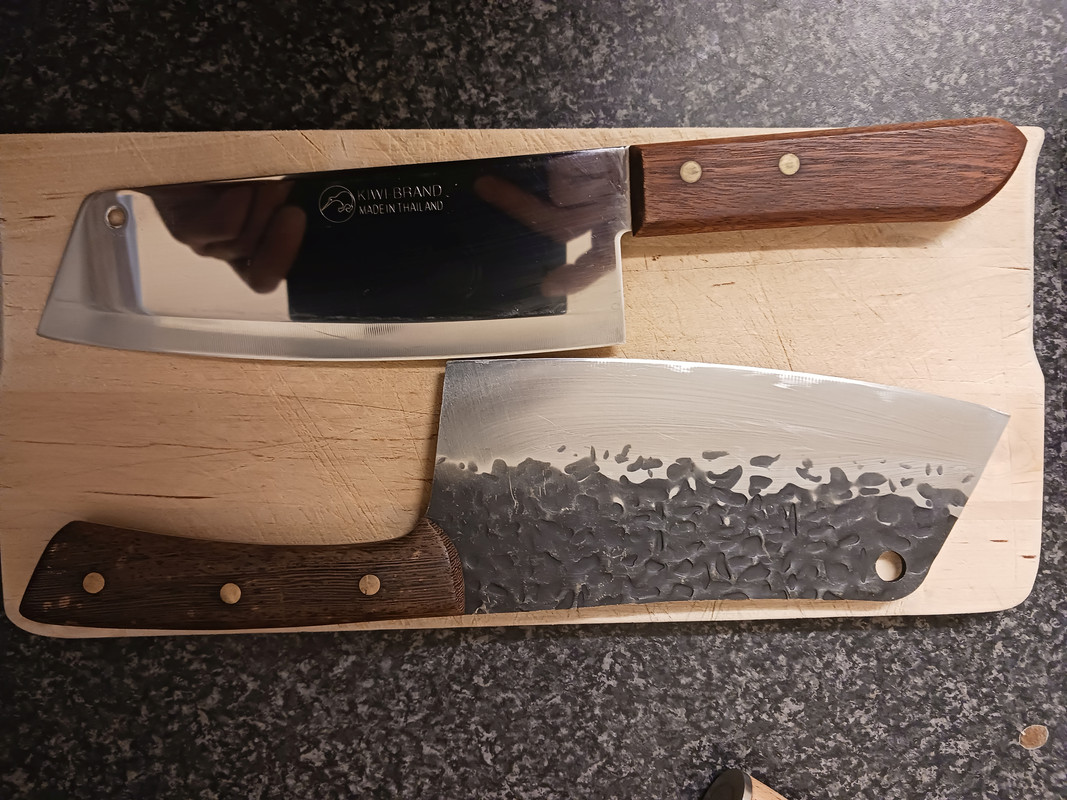
I like these choppers with tips and I have a couple of nakiri`s too that are nothing special but love the shape.
The top cheap shiny Thai KIWI one is ideal because it is so light, thin and sharp - a knife for Goldilocks !
Edge retention is the last thing on my mind but I have it covered anyway.
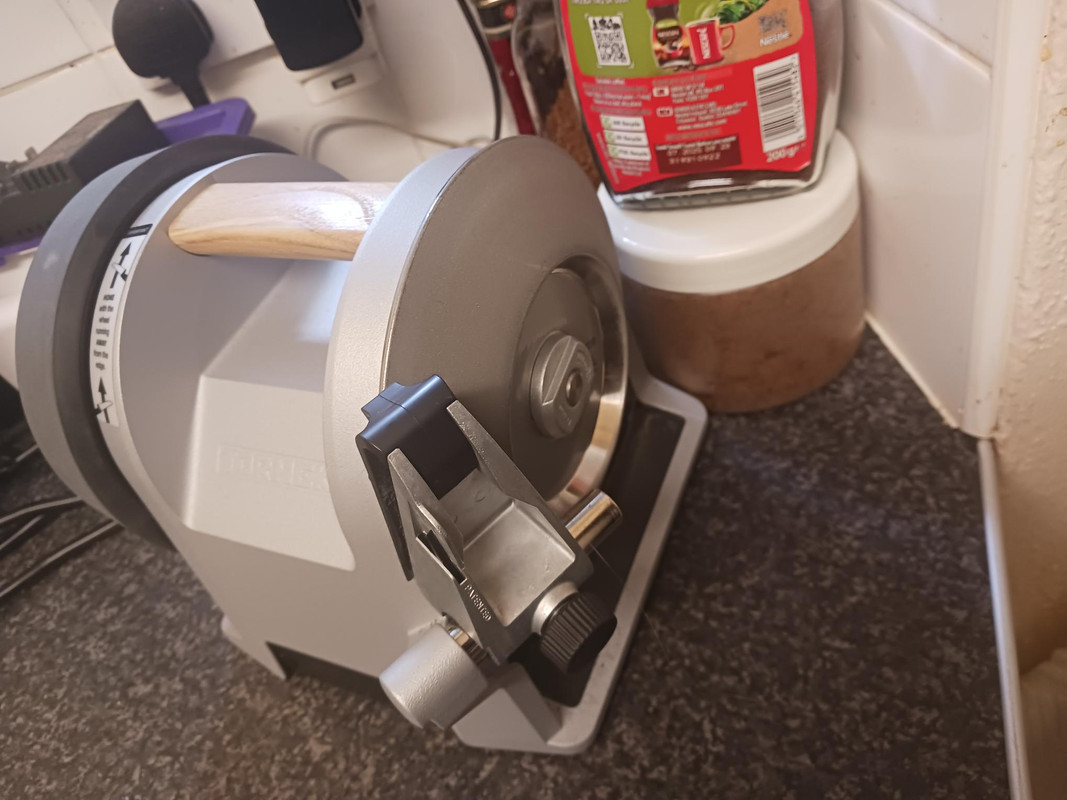
Tormek diamond wheel toy
Last edited:
- Joined
- Jun 14, 2020
- Messages
- 146
I learned late, but I adore my Shibazi f/208-2: a luxury chopper, rosewood handle, at a whopping $33. About three months ago, I got a Sugimoto cf-4030 and have been having fun doing some comparing. Wish I had started much earlier.
The two cleavers you cite Dr. Rayeye are both classics - they`re very good; I saw a lot of chefs using Shibazi`s and Sugimoto`s in Asia and the Middle East.
The good thing about wooden handles is they absorb sweat - to help grip - old-fashioned health and safety !
I`ve not worn shoes and socks for 30 years because of poor health and I have to be careful not to drop sharp knives on my exposed toes sticking out of my mules and sandals.
Saying that I wore flip-flops on construction sites in Africa and the M.E. - most of the locals don`t wear steel-toe capped safety boots either - they are real Men haha !
There are two all stainless Shibazi choppers with embossed branding on the handles on the second piccy down.They are so useful.
The very worn carbon korouchi one in the second pic down is five years old and is used to process a quarter of a ton of food a week - I help the homeless.
The good thing about wooden handles is they absorb sweat - to help grip - old-fashioned health and safety !
I`ve not worn shoes and socks for 30 years because of poor health and I have to be careful not to drop sharp knives on my exposed toes sticking out of my mules and sandals.
Saying that I wore flip-flops on construction sites in Africa and the M.E. - most of the locals don`t wear steel-toe capped safety boots either - they are real Men haha !
There are two all stainless Shibazi choppers with embossed branding on the handles on the second piccy down.They are so useful.
The very worn carbon korouchi one in the second pic down is five years old and is used to process a quarter of a ton of food a week - I help the homeless.
Last edited:
- Joined
- Jun 14, 2020
- Messages
- 146
Oh lovely Dr. Rayeye that is a superb piece of kit.
If I was was you, to get the max out of it, I would use it exclusively everyday to prepare a whole meal, master the balance and different grips, how to steer it, let the weight do the work, do cyclic pull-cuts etc and if possible go back of house in an Asian restaurant with your cleaver and get some tips from an experienced chef so you can use it efficiently.
If you practice, practice, practice it will grow on you ; believe me.
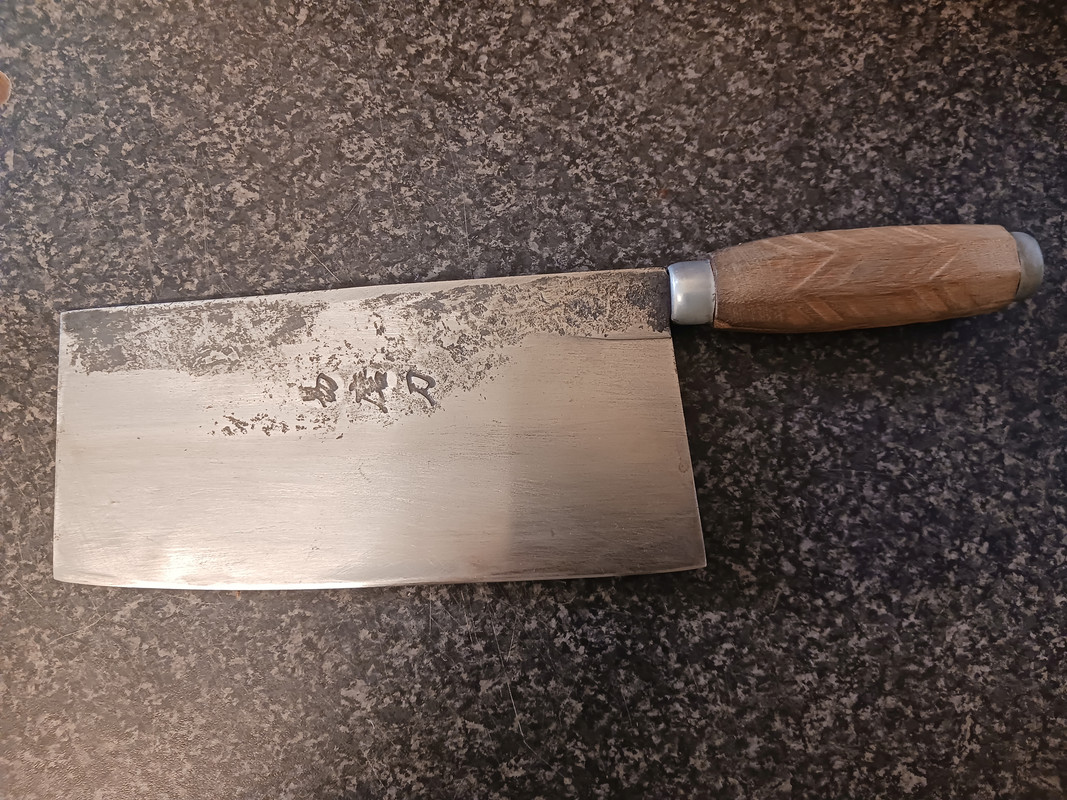
I am used to processing up to 100kg a day of produce a day using just this worn old cheapie carbon.
I can do 4 medium sized / chopped onions a minute with this kurouchi blade.
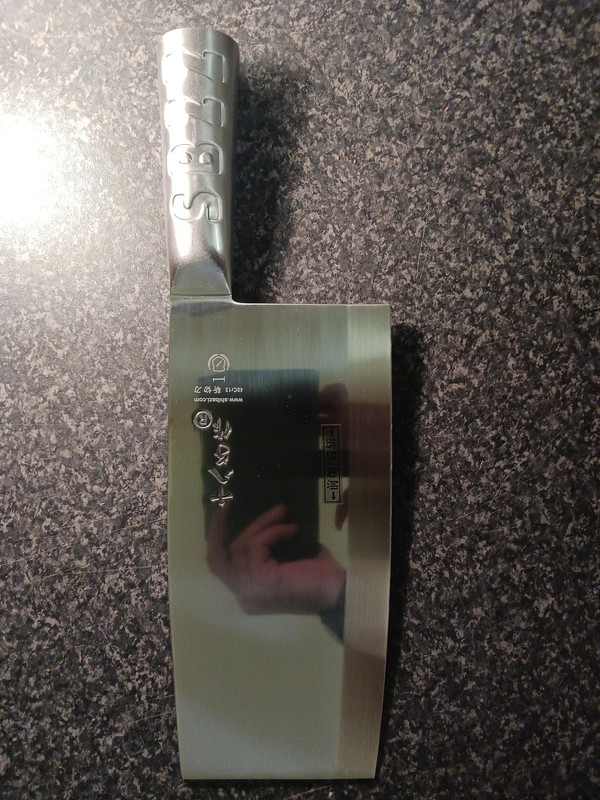
I also keep this S/S Shibazi at work because it`s bit less maintenance when I`m particularly rushed.
Good luck mate.
If I was was you, to get the max out of it, I would use it exclusively everyday to prepare a whole meal, master the balance and different grips, how to steer it, let the weight do the work, do cyclic pull-cuts etc and if possible go back of house in an Asian restaurant with your cleaver and get some tips from an experienced chef so you can use it efficiently.
If you practice, practice, practice it will grow on you ; believe me.

I am used to processing up to 100kg a day of produce a day using just this worn old cheapie carbon.
I can do 4 medium sized / chopped onions a minute with this kurouchi blade.

I also keep this S/S Shibazi at work because it`s bit less maintenance when I`m particularly rushed.
Good luck mate.
Last edited:
- Joined
- Jun 14, 2020
- Messages
- 146
Thanks for the tips. I've made quite a bit of progress already. One question: How do you control the patina on a carbon steel cleaver like my Sugimoto?
Aw you`re welcome Dr. Rayeye, mmm control patina - I have a few carbons and acidic foods and red meats can react fast sometimes.
Personally I would not want to control the patina, if it`s thick enough it can brush off most food types and you get a knife with character like an old pair of jeans or an old leather wallet etc.
I would just use it normally and build the patina up naturally.
Chefs generally don`t leave reactive carbons damp for too long so they wipe the blade as required.
I would not scrub the blade with an abrasive unless it went rusty and would just rinse in warm water only avoiding over use of detergents, bleaches and surfactants and dry thoroughly after every use.
None of my yellow, white or blue carbons are very reactive thank goodness but I have 2 pairs of scissors that go brown within minutes of air exposure and they need powdered citric acid, salt and bicarb to strip them first then camellia oil on straight away.
I`m trying to build up patina which takes time.
If I had knives that bad I`d throw them away or give them away because they`re such a PITA.
If you`re going to store it or use it in a humid environment I would just put a light coating of food safe mineral oil or even better camellia oil on the blade.
In my experience camellia works better than 3 in 1 oil, WD40 spray or mineral oil.
The Japanese have been using it on carbon blades for Centuries.
After a while it just becomes second nature and you hardly notice the slight extra maintenance compared to stainless.
Personally I would not want to control the patina, if it`s thick enough it can brush off most food types and you get a knife with character like an old pair of jeans or an old leather wallet etc.
I would just use it normally and build the patina up naturally.
Chefs generally don`t leave reactive carbons damp for too long so they wipe the blade as required.
I would not scrub the blade with an abrasive unless it went rusty and would just rinse in warm water only avoiding over use of detergents, bleaches and surfactants and dry thoroughly after every use.
None of my yellow, white or blue carbons are very reactive thank goodness but I have 2 pairs of scissors that go brown within minutes of air exposure and they need powdered citric acid, salt and bicarb to strip them first then camellia oil on straight away.
I`m trying to build up patina which takes time.
If I had knives that bad I`d throw them away or give them away because they`re such a PITA.
If you`re going to store it or use it in a humid environment I would just put a light coating of food safe mineral oil or even better camellia oil on the blade.
In my experience camellia works better than 3 in 1 oil, WD40 spray or mineral oil.
The Japanese have been using it on carbon blades for Centuries.
After a while it just becomes second nature and you hardly notice the slight extra maintenance compared to stainless.
Last edited:

